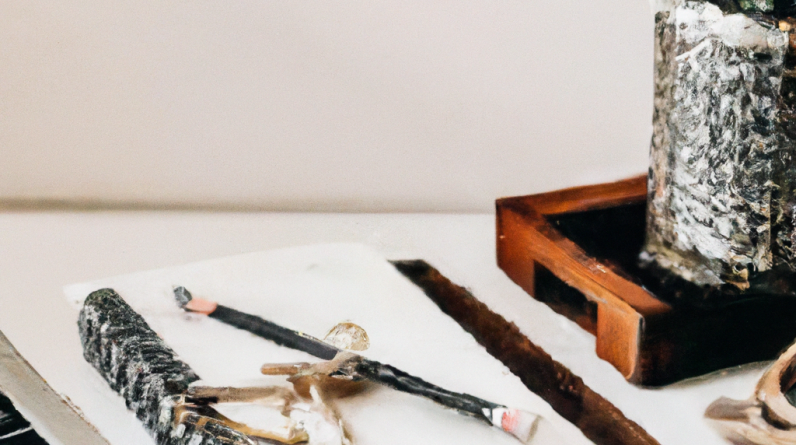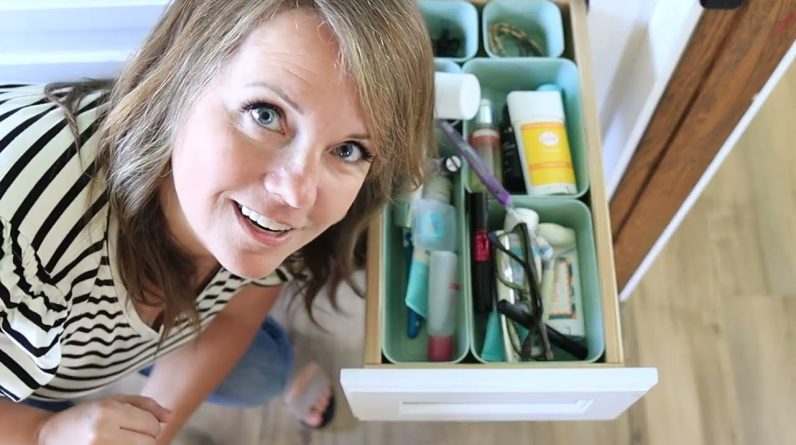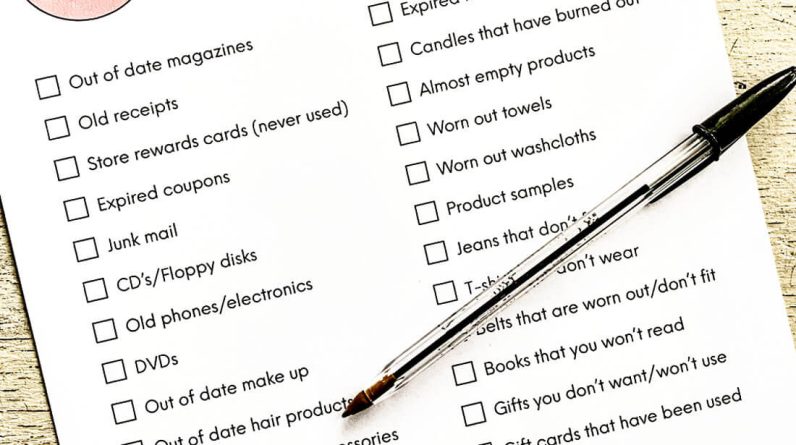
Imagine finally walking into your home and feeling a sense of calm and serenity instead of chaos and clutter. With the help of the “Declutter and Organize Checklist,” you can transform your living space into a harmonious haven. This comprehensive checklist provides a step-by-step guide to decluttering and organizing every room in your home, ensuring that you never get overwhelmed or overlook any areas. From tackling your overflowing closet to organizing your kitchen cabinets, this checklist will be your trusty companion on your journey to a clutter-free life. Say goodbye to stress and hello to a perfectly organized home with the “Declutter and Organize Checklist.”
Table of Contents
Decluttering
Start with a plan
When tackling the task of decluttering, it’s important to start with a plan. Take some time to assess your space and determine what areas need the most attention. Are there specific rooms or sections that have become particularly cluttered? By identifying these areas, you can create a clear roadmap for your decluttering journey.
Set realistic goals
To avoid feeling overwhelmed, it’s crucial to set realistic goals for your decluttering project. Break the task down into smaller, manageable tasks that can be accomplished within a specific timeframe. This will help you stay focused and motivated as you work towards your overall goal of a clutter-free space.
Sort and categorize
Sorting and categorizing items is an essential step in the decluttering process. Take everything out of the area you’re decluttering and sort items into categories such as “keep,” “donate,” or “discard.” This will not only help you see the extent of your belongings but also make it easier to decide what items are truly necessary.
Create a donation pile
As you declutter, you’re likely to come across items that are in good condition but no longer serve a purpose in your life. Instead of throwing these items away, consider creating a donation pile. This way, you can give them a second life and help those in need while decluttering your own space.
Dispose of unwanted items
For items that are no longer useful or in poor condition, it’s important to dispose of them properly. Check with your local recycling center or waste management facility for guidelines on how to dispose of different types of items. By disposing of unwanted items responsibly, you’re not only decluttering your space but also minimizing your environmental impact.
Tackle one area at a time
To avoid becoming overwhelmed, it’s helpful to tackle one area at a time when decluttering. Start with a small, manageable space and work your way through each room or section. This way, you can stay focused and see progress as you move from one area to the next.
Organizing
Invest in storage solutions
Once you’ve decluttered your space, it’s time to focus on organizing the items you’ve decided to keep. Investing in storage solutions can greatly enhance your ability to keep things organized. Consider purchasing storage bins, shelves, baskets, and other organizational tools that suit your needs and aesthetic preferences.
Designate specific spaces
To maintain an organized space, it’s important to designate specific areas for different items. Assign a spot for frequently used items, such as keys or chargers, so you always know where to find them. By giving everything in your space a designated place, you can easily put things back where they belong, reducing clutter and saving time in the long run.
Maximize vertical storage
When organizing a space, don’t forget to make use of vertical storage. Install shelves or hanging organizers to take advantage of vertical space, especially in rooms with limited floor space, such as small closets or bathrooms. This allows you to store more items without sacrificing valuable square footage.
Create labeled containers
Labeling containers is a simple yet effective way to stay organized. Whether it’s boxes, bins, or folders, clearly labeling them helps you and others easily identify what’s inside. This is particularly useful for storage areas such as closets or the garage, where items may not always be in plain sight.
Establish a filing system
If you have paperwork or documents that need to be organized, establishing a filing system is crucial. Sort documents into categories such as “bills,” “taxes,” or “important documents,” and create separate folders or files for each category. This will make it easier to locate and retrieve important paperwork when needed.

Kitchen
Clear out expired food
The kitchen is often a place where clutter can quickly accumulate, especially in the form of expired food. Regularly check the expiration dates of items in your pantry, refrigerator, and freezer, and dispose of anything that has gone bad. This will not only create more space but also ensure that you’re consuming fresh and safe food.
Organize cabinets and pantry
Take the time to organize your cabinets and pantry to make meal-preparation easier and more efficient. Group similar items together, such as canned goods or spices, and designate shelves or areas for specific categories. This will not only help you find what you need more easily but also prevent items from getting lost or forgotten.
Clean out refrigerator
The refrigerator tends to accumulate various items over time, including leftovers, expired condiments, and forgotten produce. Take the opportunity to clean out your refrigerator regularly, removing any expired or spoiled food and wiping down the shelves and drawers. This will not only create more space but also help keep your fridge smelling fresh.
Declutter countertops
Clearing off your countertops can instantly make your kitchen look neater and more organized. Put away small appliances that you don’t use regularly and find designated storage spots for items that tend to clutter the countertops like cooking utensils or cutting boards. This will create a more functional workspace and make it easier to clean.
Arrange cooking utensils
Well-organized cooking utensils can make a big difference in the functionality of your kitchen. Consider using drawer dividers or countertop utensil holders to keep your cooking tools organized and easily accessible. Grouping them by category, such as spatulas or whisks, can also streamline meal preparation.
Sort through dishes and glassware
Take the time to sort through your dishes and glassware, donating or discarding any items that are no longer needed or broken. Consider organizing them by type or use to make it easier to find what you need. Also, try to limit the number of dishes and glassware you keep to prevent overcrowding your cabinets.
Living Room
Eliminate excess furniture
To create a more spacious and organized living room, consider eliminating any excess furniture. Identify pieces that are rarely used or take up too much space and consider selling, donating, or repurposing them. This will not only create more open space but also make it easier to clean and navigate the room.
Arrange seating for optimal flow
When arranging the seating in your living room, consider the flow of the room and how people will move through the space. Arrange furniture in a way that allows for easy conversation and traffic flow, taking into account any architectural features, such as windows or doors. This will create a more inviting and functional arrangement.
Declutter coffee tables and shelves
Coffee tables and shelves often become catch-alls for miscellaneous items in the living room. Take the time to declutter them, removing any items that don’t belong or serve a purpose. Limit the number of decorative items you have on display to reduce visual clutter and create a more streamlined look.
Organize books and magazines
If you have a collection of books or magazines in your living room, take the opportunity to organize them. Sort them by genre, author, or topic, and arrange them on bookshelves or in magazine holders. This will make it easier to find and enjoy your favorite reading materials while keeping them neat and tidy.
Create an entertainment center
If your living room is also a space for entertainment, consider creating an entertainment center to keep your electronics and media organized. Invest in a TV stand or media console with storage options for DVDs, game consoles, and remotes. This will help prevent cords from becoming tangled and keep your entertainment area looking clean and clutter-free.

Bedroom
Organize clothing by category
One of the key areas in the bedroom that can quickly become cluttered is the clothing storage. Organize your clothing by category, such as tops, pants, or dresses, and consider using drawer dividers or storage bins to keep items separated. This will make it easier to find what you need and maintain an organized wardrobe.
Sort through shoes and accessories
Take the time to sort through your shoes and accessories, donating or discarding any items that are no longer worn or in poor condition. Consider using shoe racks or storage boxes to keep shoes organized and easily accessible. Utilize drawer dividers or jewelry organizers for accessories such as belts, scarves, or jewelry.
Create a designated spot for dirty laundry
Keeping dirty laundry off the floor is key to maintaining a clutter-free bedroom. Create a designated spot, such as a hamper or laundry basket, for dirty clothes. Place it in a convenient location, such as the closet or corner of the room, to encourage regular use and prevent clothes from piling up.
Remove items from under the bed
Under-bed storage can be a useful space-saving solution, but it can also become a catch-all for items that don’t have a proper place. Take the time to declutter and remove any items that have accumulated under your bed. Use under-bed storage containers or vacuum-sealed bags to keep seasonal items or extra bedding organized and out of sight.
Declutter nightstands
Nightstands often become clutter magnets in the bedroom. Take a moment to remove any unnecessary items from your nightstands, such as old water glasses or expired medication. Keep essentials within reach, such as a lamp or alarm clock, and consider using drawer organizers or trays to contain smaller items like books or charging cables.
Bathroom
Purge expired products
Bathrooms are notorious for accumulating expired or unused products. Take the time to go through your toiletries and cosmetics, discarding any expired items. This will not only free up space but also ensure that you’re using products that are still effective and safe.
Organize toiletries and towels
Keep your toiletries and towels organized by creating designated spots for each category. Consider using drawer dividers or small bins to keep products separated and easily accessible. Roll or fold towels neatly and stack them on shelves or in a linen closet to save space and maintain a tidy appearance.
Utilize drawer dividers
Drawer dividers are a game-changer when it comes to organizing bathroom drawers. Use them to keep items like makeup, brushes, and toothbrushes neatly separated. This will not only make it easier to find what you need but also prevent items from rolling around and creating a mess.
Declutter the shower area
The shower area can quickly become cluttered with multiple bottles and products. Take the time to declutter, removing any empty containers or items that are rarely used. Consider using a shower caddy or hanging organizer to keep essential products within reach and prevent them from cluttering the shower floor.
Maximize under sink storage
The space under the bathroom sink is often underutilized. Invest in stackable storage bins or shelves to maximize this area. Use them to store cleaning supplies, extra toiletries, or other items that you want to keep within reach but out of sight. This will help keep the area organized and create more usable space in the bathroom.
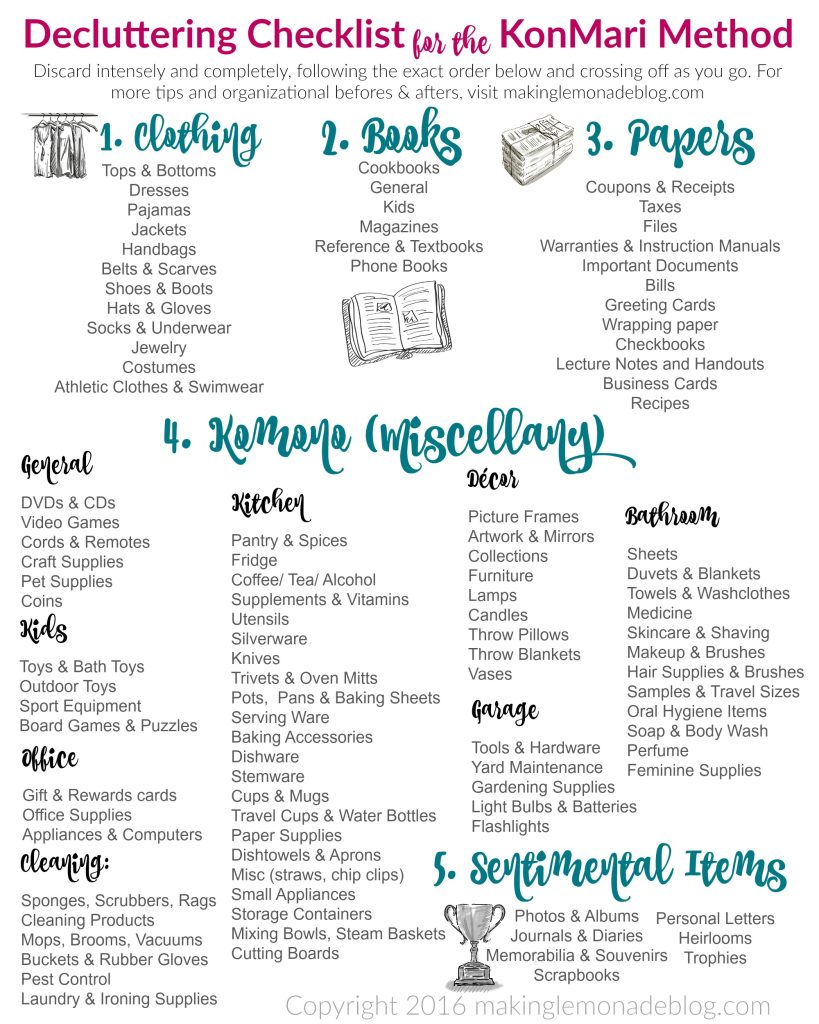
Home Office
Clear off the desk surface
A cluttered desk can hinder productivity and create a sense of chaos in your home office. Take a few minutes at the end of each workday to clear off your desk surface, removing any unnecessary items or paperwork. This will create a clean and organized space to work in the next day.
Organize electronic cables
Electronic cables can quickly become tangled and create a mess in the home office. Take the time to organize them using cable management solutions, such as cable clips or sleeves. Label each cable to easily identify them and keep them organized behind your desk or entertainment center.
Declutter digital files
Digital clutter is just as real as physical clutter, especially in the age of virtual workspaces and digital storage. Take some time to declutter your digital files, deleting any unnecessary or outdated documents. Create folders or use a file organization system to keep your digital files organized and easily accessible.
Establish a filing system
If you still have physical paperwork in your home office, it’s important to establish a filing system. Invest in file folders or cabinets to keep important documents organized. Sort papers into categories such as “bills,” “taxes,” or “receipts.” This will make it easier to locate and retrieve important paperwork when needed.
Create a designated inbox
A designated inbox can help you stay organized and prevent paperwork from piling up on your desk. Use a tray or folder to collect incoming mail, important documents, or items that require attention. Regularly go through your inbox and take action on each item, such as paying bills or responding to emails.
Closets
Sort through clothing and accessories
Closets are often filled with items that haven’t been worn in years or no longer fit properly. Take the time to sort through your clothing and accessories, donating or discarding anything that no longer serves a purpose. Keeping only items that you love and wear regularly will make it easier to maintain an organized and functional closet.
Install additional storage solutions
If your closet lacks adequate storage space, consider installing additional solutions such as shelves, hanging organizers, or shoe racks. Utilize vertical space to make the most of your closet and keep items visible and accessible. This will help maximize storage capacity and prevent items from becoming cluttered or forgotten.
Utilize hanging organizers
Hanging organizers can be a game-changer when it comes to keeping small items or accessories organized in the closet. Use them to store items such as scarves, belts, or hats. This not only saves space but also makes it easier to find and select items when getting dressed.
Declutter the floor space
A cluttered closet floor can make it difficult to navigate and access items in your closet. Take the time to declutter the floor space, removing any unnecessary items or boxes. Consider utilizing storage bins or under-bed storage containers for items that are not frequently used or out of season.
Arrange items by frequency of use
When organizing your closet, consider arranging items by frequency of use. Keep frequently worn clothing and accessories within easy reach, while storing less frequently used items in spaces that are less accessible. This will help streamline your daily routine and make it easier to find what you need when getting dressed.
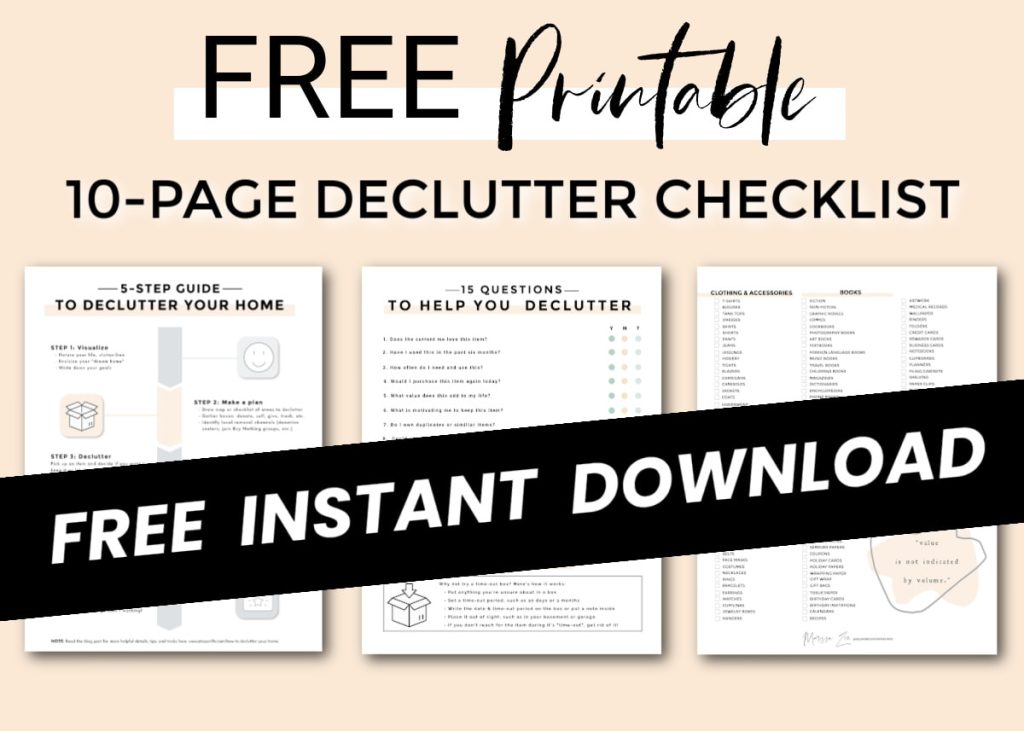
Garage
Empty and sort storage boxes
Garages often become storage areas for items that don’t have a proper place. Take the time to empty and sort through your storage boxes, grouping similar items together. Discard any items that are no longer needed or in poor condition. This will create more space and make it easier to find what you need in the future.
Install wall-mounted shelving
To maximize vertical space in your garage, consider installing wall-mounted shelving units. This will provide additional storage for items such as tools, gardening supplies, or sports equipment. Utilize labeled bins or storage containers on the shelves to keep similar items together and easily accessible.
Organize tools and equipment
Sorting and organizing tools and equipment is crucial to maintaining an organized garage. Group similar tools together and use pegboards or wall-mounted tool racks to keep them organized and within reach. Consider labeling toolboxes or storage bins to quickly identify the contents.
Declutter workbench
The workbench is often a hotspot for clutter in the garage. Take the time to declutter, removing any items that don’t belong or are no longer needed. Keep only essential tools and supplies within reach and store everything else in labeled bins or cabinets. This will create a more functional workspace and prevent the workbench from becoming a dumping ground.
Create zones for different items
To maintain an organized garage, create zones for different categories of items. Designate specific areas for gardening supplies, sports equipment, or seasonal decorations. Clearly mark these zones using signs or labels to prevent items from becoming mixed or misplaced.
Maintenance
Regular cleaning schedule
Regular cleaning is essential to maintaining an organized and clutter-free home. Establish a cleaning schedule that suits your lifestyle and stick to it. This may include daily tasks such as sweeping or wiping surfaces, as well as weekly or monthly deep-cleaning tasks. By staying on top of cleaning, you can prevent clutter from accumulating and maintain a tidy home.
Setup a decluttering routine
In addition to regular cleaning, setting up a decluttering routine can help prevent clutter from taking over your space. Dedicate a specific time, whether it’s once a month or once a season, to go through different areas of your home and identify items that can be donated or discarded. This will help you stay proactive in keeping your space organized.
Stay organized on a daily basis
Maintaining an organized home requires daily effort. Take a few minutes each day to put items back where they belong, wipe down surfaces, and tackle any small organizational tasks. By staying organized on a daily basis, you can prevent clutter from building up and make it easier to maintain an organized home in the long run.
Revisit the checklist periodically
As time goes on, your organizational needs may change. Periodically revisit this checklist to assess your space and identify areas that may need attention. Modify or update your organizational systems as necessary to better suit your current needs and lifestyle.
Review and make necessary adjustments
Organizational systems are not one-size-fits-all. Review your organization strategies regularly and make necessary adjustments to better suit your needs. What works for one person may not work for another. Don’t be afraid to experiment and find the organizational systems and methods that work best for you and your space.
By following this comprehensive checklist and implementing the suggested strategies, you can declutter and organize every area of your home. Remember to start with a plan, set realistic goals, and tackle one area at a time. Invest in storage solutions, designate specific spaces, and utilize vertical storage. With proper organization and maintenance, you can create a clutter-free and organized home that is both functional and visually appealing.







